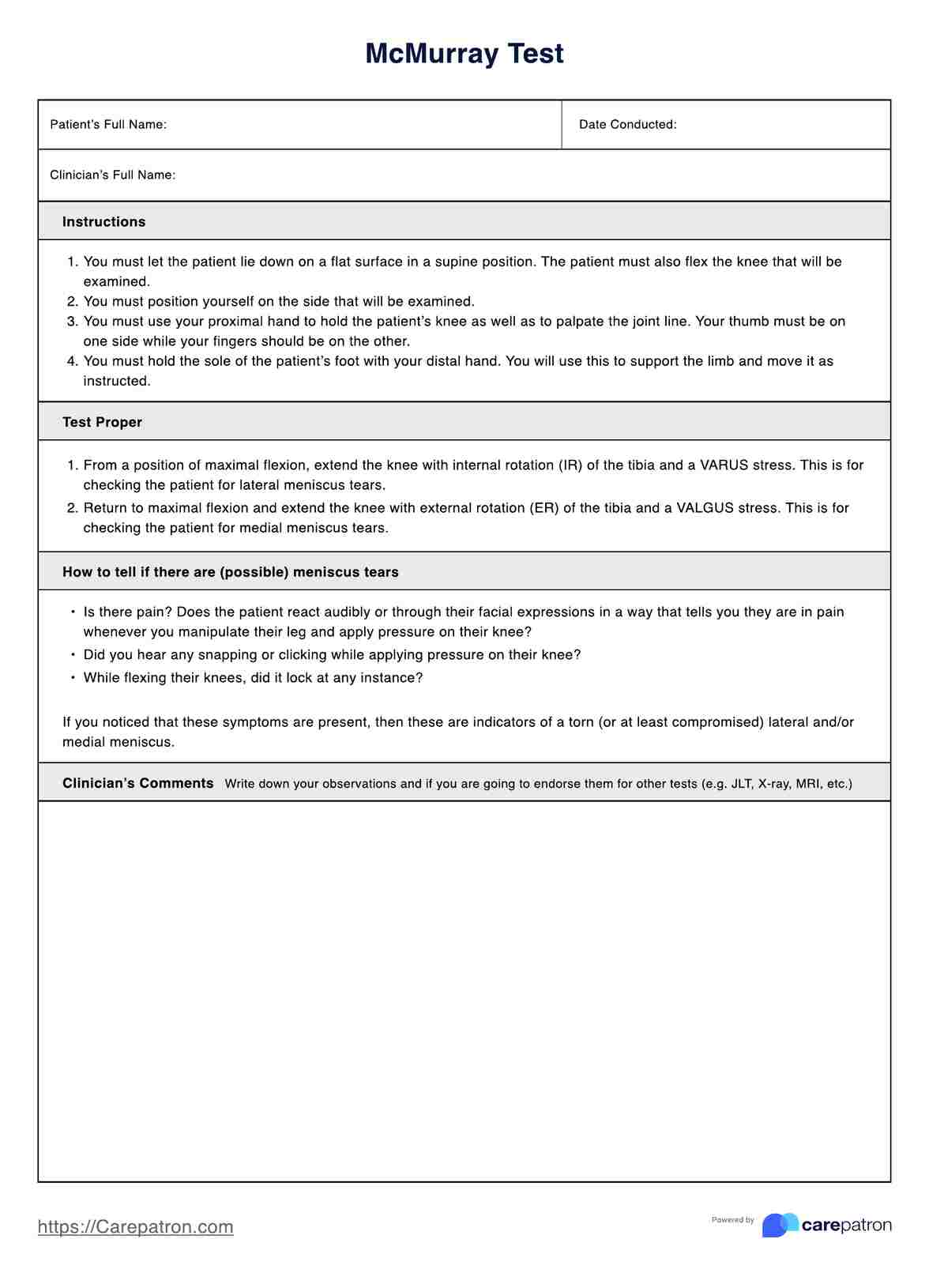This will depend on the patient. Pain is a symptom of meniscus tears after all, and since you will be applying pressure to their knees, they will definitely feel pain. Just be as gentle as possible. Do note that even if applying pressure brings them discomfort, the pain is an indicator of what they might have. If there is pain but only slight, maybe the meniscus is just strained and needs rest. If the pain is intense, they likely have a meniscus tear.

McMurray Test
If you have a patient complaining about knee pains, swelling, or locking, administer the McMurray Test to gauge their knees and see if they might be suffering from a meniscal injury.
McMurray Test Template
Commonly asked questions
The McMurray Test is relatively safe. But given that pain is a factor here, it would be best for the healthcare professional to be gentle when manipulating the limbs and applying pressure to the knee. You don’t want to make an existing knee injury worse. It’s best to be careful when conducting this test, especially if you are conducting it as a way to monitor someone who just got surgery for a meniscus tear.
That will depend on the healthcare professional and the patient. This may take anywhere between one minute to ten. The instructions are easy to follow, so it shouldn’t take too long to accomplish.
EHR and practice management software
Get started for free
*No credit card required
Free
$0/usd
Unlimited clients
Telehealth
1GB of storage
Client portal text
Automated billing and online payments











